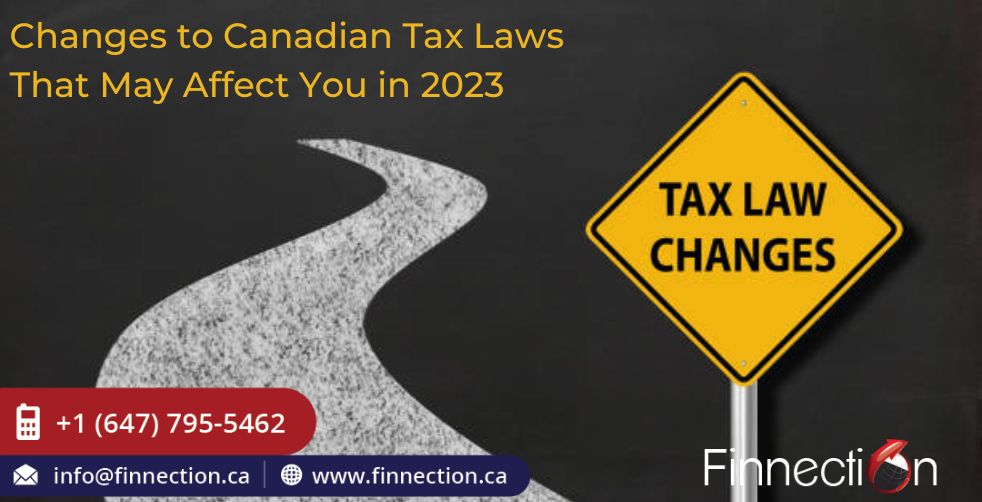Economic volatility has been significant over the past year as a result of COVID-19 developments and rising inflation.
As a result, while submitting income tax returns in 2023 and after, Canadian taxpayers need to be aware of a number of changes.

To make things clearer, we’ve broken down how these changes will impact you and compiled the top 7 changes you need to be aware of when filing your return in 2023.
1.New tax brackets
To ensure that Canadians’ purchasing power is sustained as prices for commodities continue to gradually rise, the government has modified tax brackets for 2022.
The following are the new federal tax brackets for 2022:
- Income from $0 to $50,197 (15%)
- $50,197 and upwards to $100,392 (20.5%)
- Over $100,392 and up to $155,625 (26%)
- Over $155,625 and up to $221,708 (29%)
- Over $221,708.01 (33%).
2. Basic Personal Amount increase
Anyone who pays income taxes in Canada is eligible to claim the Basic Personal Amount, sometimes known as the BPA. The Basic Personal Amount for the 2022 tax year is $14,398 as part of the government’s plan to gradually raise it until it reaches $15,000 in 2023.
3. First-Time Home Buyers’ Tax Credit doubled
After new legislation is passed in December 2022, potential first-time home buyers will be able to claim a $10,000 non-refundable income tax credit, which is a twice the previous amount. This might result in a tax savings of up to $1,500.
4.The TFSA limit has been increased
The annual TFSA contribution cap has been raised to $6,500. This means that the maximum cumulative amount you may have in your TFSA is now $81,500 if you have had an account since 2009, were 18 years old at the time of opening it, and have resided in Canada throughout that time.
5.Earnings and contributions to the Canada Pension Plan are rising.
The Canada Pension Plan will be governed by new regulations starting in 2023. The maximum amount of CPP pensionable income will increase to $66,600 in 2023 from $64,900 in 2022. In 2023, the basic exemption amount will remain $3,500.
6.RRSP dollar limit increase
For the tax year 2022, the RRSP yearly dollar cap is $29,210. Keep in mind that your RRSP contribution maximum is set at 18% of your prior year’s earned income. Therefore, regardless of your income, you may only contribute up to the dollar limit.
7. COVID-19 benefit repayment
You might be required to repay all or a portion of the benefits you received in 2022 if you received the CRB and your net income after certain adjustments is greater than $38,000.
You have the option of selecting which year to claim the tax reduction if you have paid back all or part of your COVID-19 benefits in 2022. Either the year you repaid the benefit or the year you received it, you may claim the deduction.
Few Tax Filing Tips:
There are a few guidelines that all taxpayers should follow, regardless of how they file their taxes:
- The deadline for most people to file their income tax returns is April 30, 2023. Doing so will help you avoid penalties.
- Claim any tax credits for which you may qualify.
- Take advantage of any tax relief you are entitled to.
- If you can, optimize your RRSP but don’t go over.
- If you can, make the most of your TFSA, but don’t go over.
If you have any questions regarding tax filing, feel free to contact finnection via email at info@finnection.ca or call us at (647) 795-5462
Disclaimer: Above information is subject to change and represent the views of the author. It is shared for educational purposes only. Readers are advised to use their own judgement and seek specific professional advice before making any decision. Finnection Inc. is not liable for any actions taken by reader based on the information shared in this article. You may consult with us before using this information for any purpose.
